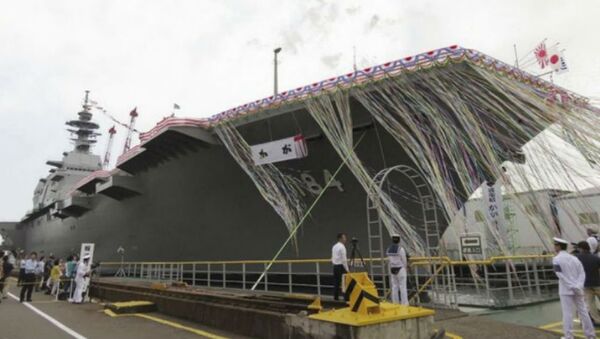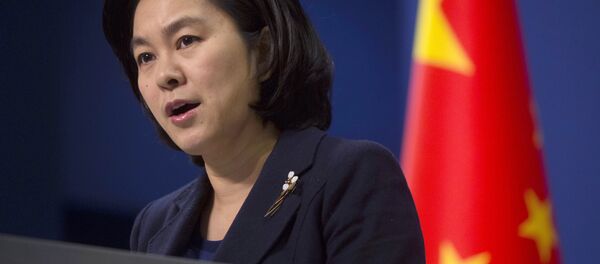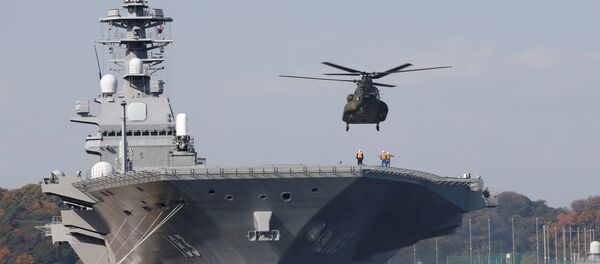The Izumo is a helicopter destroyer-class warship. This is the class of naval ships built only for the Japan Maritime Self-Defense Force (JMSDF). In the rest of the world, such a warship would be qualified as a helicopter carrier or a light aircraft carrier.
The warship has a displacement of 27,000 tons, surpassing European light aircraft carriers and matching US amphibious ships of certain types.
In theory, the Izumo can carry the F-35B vertical takeoff/landing jet fighter, becoming a full-fledged light aircraft carrier. However, there have been no reports on Tokyo’s plans to purchase those jets.
Probably, the Izumo would need certain technical upgrades for such deployment, including a ski-jump and an entrenched deck.
But even in the role of a helicopter carrier, the Izumo is a formidable naval force. Usually, it carriers nine helicopters, but if necessary their number can be increased.
It cannot be ruled out that on its three-month mission the Izumo will be accompanied by one Japan’s top-notch destroyers armed with anti-ship missiles and a powerful air-defense system.
"The move will be one of Tokyo’s biggest demonstrations of, including its capabilities to project force to remote areas around the world. The passage of the Izumo and its naval group via the South China Sea is likely to spark negative political reaction in Beijing," Russian military expert Vasily Kashin told Sputnik Japan.
Unlike Japan, China has already has two aircraft carriers in service and another two flattops are now in construction.
China’s first aircraft carrier, the Liaoning, was commissioned in 2012. The ship was originally laid down as a Soviet multirole aircraft carrier under the name Riga and then Varyag. China bought it from Ukraine for $25 million. Currently, Beijing is developing its own aircraft carrier program. By 2020, the Chinese naval forces are expected to receive several domestic aircraft carriers.
The Izumo could also be used to protect Japanese transportation routes from Chinese submarines. According to Kashin, this is one the priority goals for Japan, a country badly dependent on commodity exports, including fuel and food.
"At the same time, the presence of such a capable warship in service builds up the reputation of the Japanese Maritime Self-Defense Forces, expands Tokyo’s military contacts and reaffirms its role as a US ally," the expert concluded.
Never miss a story again — sign up to our Telegram channel and we'll keep you up to speed!







